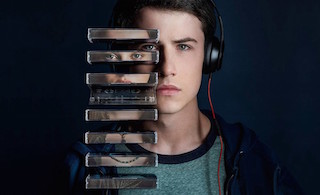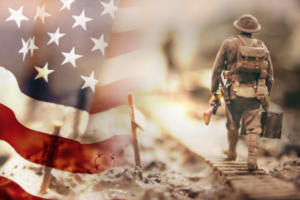 May is Mental Health Awareness Month and it might be necessary to discuss a topic, a particular series that has been rocking the conversations of teens, parents and school staff alike in our communities.
May is Mental Health Awareness Month and it might be necessary to discuss a topic, a particular series that has been rocking the conversations of teens, parents and school staff alike in our communities.
With each new recording is a person she blames and the set of events that ensued to bring her closer to her eventual suicide. The series shows a very open and graphic portrayal of uncomfortable situations its main character goes through, like slut-shaming, harassment, rape and in the last episode, suicide.
Though created to open up a dialogue about mental health in teens, the series has sparked controversy, globally, having been banned in many schools, and has inspired mental health professionals to speak out. Executive producer and pop sensation, Selena Gomez, feels the adaptation was necessary. “It’s not an easy subject to talk about,” she commented.
Jay Asher, the author of the book that inspired the series, says, “It’s uncomfortable, but that’s OK. It needs to be.” The book itself has frequented the best-seller list for the past dozen years or so and won numerous awards.
Locally, the series has made waves among our middle and high schools. Many of our School Districts have taken note of the impact of the series and sent messages to parents and teachers echoing similar messages – i.e., a warning about the graphic content in the series, but not a definitive stance on whether parents should let their children watch it.
A letter from Superintendent, Chris Borsari of the Public Schools of the Tarrytowns detailed the concern, “The producers claim this series will stimulate a dialogue among family members regarding teen drug abuse, bullying and suicide. However, many in the Mental Health and Educational Community are skeptical and concerned that it undermines the importance of help-seeking behaviors, is dark and graphic in nature, and romanticizes suicide.”
The author of the novel, when asked about the controversy surrounding the series speaks to the importance of not hiding the subjects of suicide and rape, “If we’re doing this, it can’t be something that you can look away from or just gloss over in your mind,” he continued. “You have to be uncomfortable when you’re watching it; otherwise you’re not in her mind. In a way, it’s disrespectful if we say, ‘We know this stuff is happening, but we don’t want to be made uncomfortable by it.’”
Similarly, Irvington School District Superintendent, Kris Harrison, also sent out a message. “We know that many of our teenagers have been watching the show; and therefore, we are writing to provide you with the information that you can use as parents.” The letter goes on to ask parents to “consider whether or how” the show should be viewed in their homes.
According to the U.S. Department of Health and Human Services, one in five adolescents has a diagnosable mental health disorder, and nearly one third show symptoms of depression, and now some professionals are worried about copycats.
Local psychologist, Barbara Kapetanakes, PsyD, in Sleepy Hollow has been practicing for twenty years and thinks the series could have positive or negative repercussions. “I think the show can have an impact in two ways, both good and bad. Yes, it can lead to some copycat suicides, as we sometimes see when there is a suicide, particularly among kids . . . So, I think it’s really important for parents, teachers, etc., to be aware of this show and to give the opportunity for kids to talk about their feelings on the show, and to let them know that they can seek help if needed.”
“On the other hand, if done right, a show like this can open the door for conversation, for a child getting help, for parents to start a dialogue about depression, suicide, and the like,” she continued.
Briarcliff School District Superintendent, Dr. Kaishian, takes the same approach as the other Districts – that the decision is ultimately up to the parents. “While it is not my intention to cast judgement regarding individual fitness or appropriateness of watching the series, it is important for you to be cognizant of its availability, allure, content and popularity.”
It seems the show has definitely had a direct impact on our young community. Psychologist, Dr. Kapetanakes says she has spoken to her patients about the series. “I had a kid in my office the other day who loves the show. I asked him if it made him feel at all that suicide was an option, or brought up difficult feelings for him. He said the show was emotional for him, but also said that no, he didn’t think that suicide was an option after watching it, but felt instead that it brought awareness to the problem of teen depression and suicide.”
In a letter from the Ossining School District, Superintendent Raymond Sanchez says, “the trailers and advertisements may be misleading…” when noting that the producers say the show is about opening up an “important dialogue.”
In the wake of the controversy, Netflix recently announced they will place “additional advisories” for the show, including a new warning card at the beginning of the first episode. There are already advisories in place at the beginning of most episodes, including the episodes involving graphic rape and suicide scenes.
Dr. Kapetanakes does have some advice moving forward. “I think writing the show off as glorifying suicide or wishing kids didn’t watch it is exactly what not to do. The kids are watching it. Period.” Dr. Kapetanakes goes on to remind us that other stories have come around before, mentioning Romeo and Juliet as an example of romanticizing these kinds of behaviors and saying, “Talking about the gruesomeness of taking one’s life, the gruesomeness of how the character takes her life, the reality of suicide, rather than the romanticism of it is important.”
A few of the School Districts also noted that the JED Foundation, a national nonprofit that exists to protect emotional health and prevent suicide for our nation’s teens and young adults, has created links to help engage with children who are watching or have watched the series. Those links can be found on the foundation website.
[A Note From the Writer: My views are my own and not necessarily those of the River Journal.] If I may, as a member of this community and someone who has struggled with mental health, I’d like to say, I watched “13 Reasons Why.” I won’t pretend it wasn’t difficult to watch. Seeing an adolescent girl that reminded me, not only of myself, but of so many whom I knew growing up who went through what she did, wasn’t easy. I cried when she cried about losing friends and being harassed. I cringed when a boy put his hands on her and expected from her. And, admittedly, I had to cover my eyes when she sat in a bathtub, sobbing and took her own life. But I cannot disagree with Dr. Kapetanakes. The show made me feel more aware and concerned. What surprised me was the feeling of kinship, not only to Hannah but to every teen in the series. Our youth today struggles with topics we didn’t have to – even for me, at only twenty-seven-years-old – because, believe it or not, ten years ago, high school was a different place. It was a place without Facebook or Snapchat, without 24-hour, full internet access and without virtually every kid having the newest, coolest camera phone.
It is important for teens and their families to both be on the same page and know what goes on. And while the horrible events that ensued in the series obviously don’t necessarily happen to all of the younger generation in our community, giving them a better understanding of how to deal with it if it does happen to them or to someone around them could be life changing.
The series could help us recognize how little we pay attention these days. Are we seeing the signs, the warnings that our children, our friends and our neighbors are giving off? There are allusions to mental health symptoms in more than one character in this series; Hannah is not the only one struggling. Did you catch it?
At the end of the series, Hannah says, “A lot of you cared, just not enough.” That’s how she felt; she felt that no one wanted to save her, no one would come after her and that people were okay to let her go. I think, even as a non-parent in this community, we should be letting all of our teens and young children know that none of them are alone and that there is always help available.






